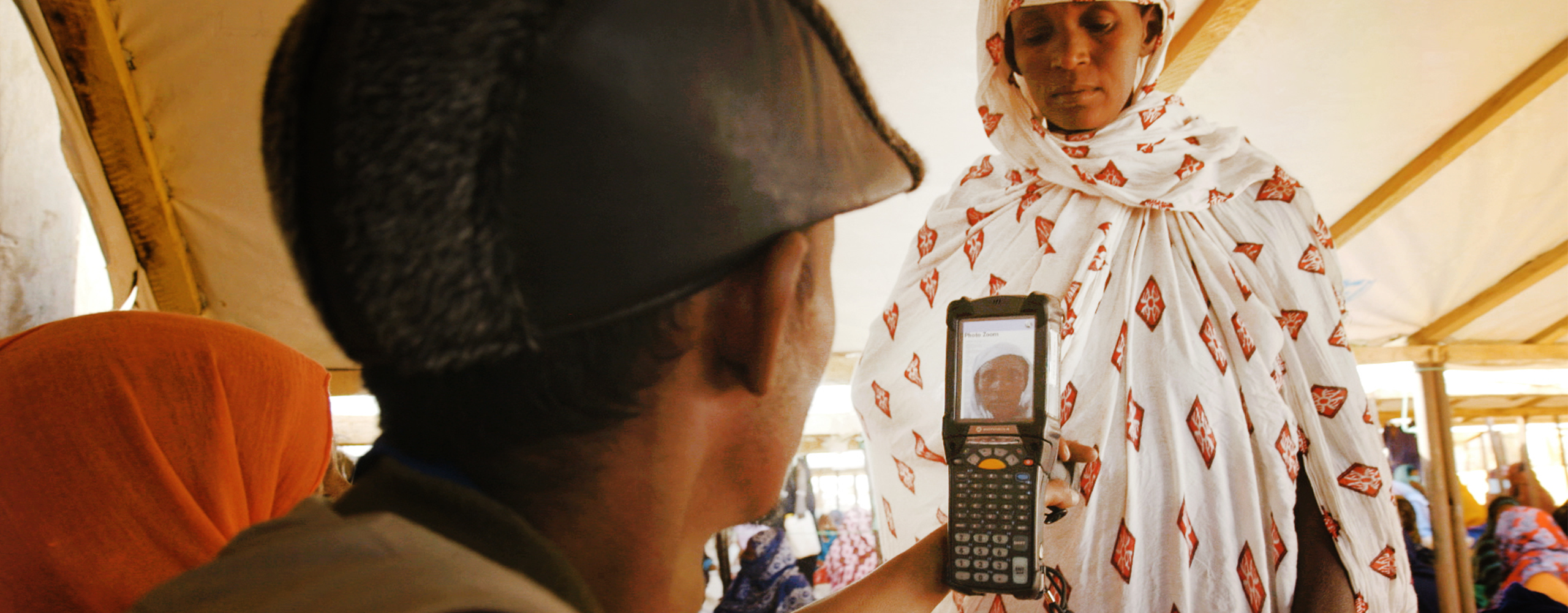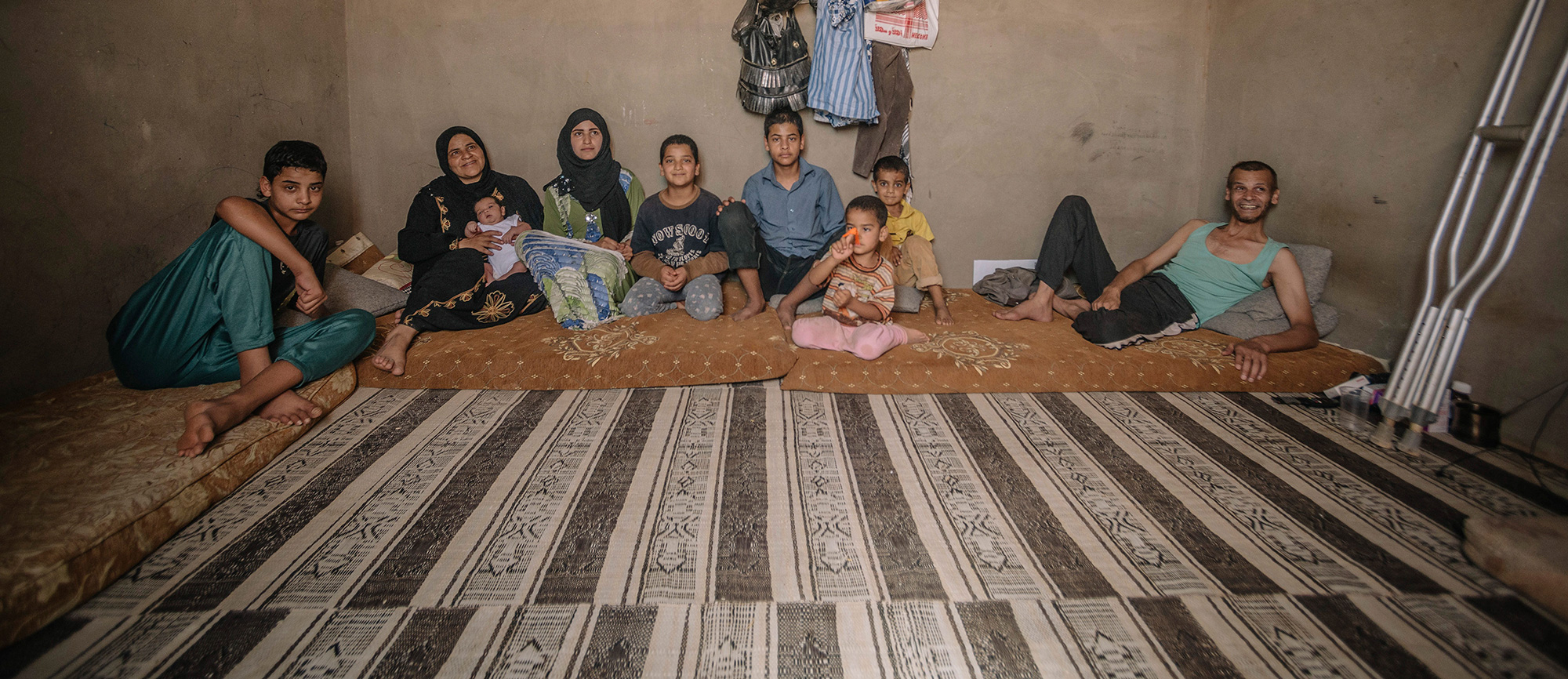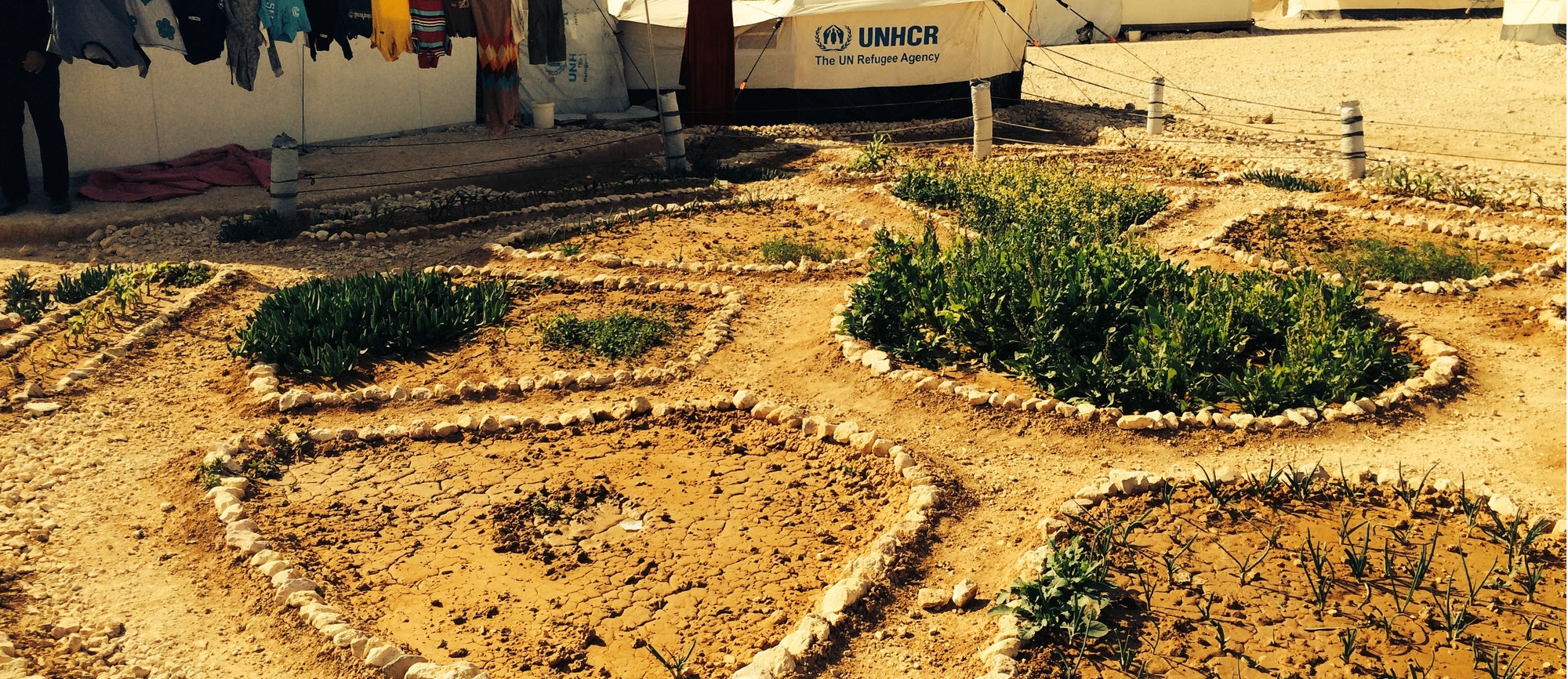1. Define challenges
Linking registration with distribution data collection
One of the most important challenges in a refugee environment is simply knowing who is there and what they need. In most situations, UNHCR registers every refugee under its protection, and uses those registration records to inform the distribution of essential supplies like blankets and cooking utensils to families. UNHCR also uses registration databases to inform the provision of services such as healthcare and education.
Despite the importance of this first interaction with refugees, UNHCR does not yet have an integrated tool to efficiently track who has received which items. During emergencies, it still relies on paper-based data collection for recording what assistance was provided, making the process slower and the data less reliable. And although distribution lists are based on registration, there was also no link between registration and distribution databases to make the process more effective and easier to analyze.
It takes more time than it should when multitudes of paper records must be brought back to the office and re-entered into a computer. And copying data from one form to another results in a higher likelihood that errors will be introduced.
Furthermore, UNHCR needed a way to use registration information to seamlessly follow through on distributing the goods and services that refugees needed, from tents and blankets to sanitary napkins, flashlights and food items.
Recording who received what and when is a tedious process when each item must be marked on paper then re-entered into a computer—and one that is often left undone.
UNHCR had more than enough reasons to look for a new idea in interlinked refugee registration and distribution data collection.
2. Identify solutions
A flexible mobile tracking device
UNHCR knew by integrating and modernizing its registration platform with a distribution platform, with light, flexible and reliable mobile tools, it could cut down on data inaccuracies and make it easier to transfer, share and analyze information.
UNHCR looked to a partner with experience in mobile data collection and tracking systems—one that is incredibly familiar with what it takes to reliably take stock of a whole lot of moving pieces: United Parcel Service (UPS). UPS expressed interest in working to refine UNHCR’s refugee registration and distribution data collection and tracking process.
One of its tools in particular seemed a perfect fit: UPS’s familiar Trackpad® would become the UPS ReliefLink Program (or “ReliefLink”) — able to record which individuals or households received assistance and feed the data back into UNHCR’s registration database. It provided UNHCR with the software to use it free of charge.
After each distribution, the technology would allow UNHCR to view exactly what each household received and when, making it easy to get information that helps with management, such as which families did not show up for distribution and may be living elsewhere.
For assistance quantities to be correctly calculated and synced with a distribution list, certain data such as ration card numbers, ages, photos and lists of previous items received would have to be exported. Would ReliefLink be able to perform these calculations, or at least properly upload the information? Could multiple ReliefLinks be used at once without opening the system to exploitation?
Through our LinkLab, we decided to put it to the test.

3. Test solutions
Finding the right site for testing
UPS uses its Trackpad® around the world, but we wanted to try ReliefLink out where it could get real feedback on how it worked for refugees. We first brought the tool to Lebanon for a field test.
It seemed like the perfect place for a trial run. In Lebanon, several UNHCR Innovation Fellows with Registration, Information Management, and ICT core competencies were already working together, and they had lots of experience testing new approaches in field operations.
The team was confident that ReliefLink could be quickly tested and scaled up, and enthusiastic to try it out. They planned a two-month pre-trial aimed at 100 urban households that required distributions of medical items.
It wasn’t the place to test ReliefLink. The number of Syrian refugees in Lebanon soared from around 700,000 to more than 1.2 million, and UNHCR’s priorities were squarely focused on dealing with the refugee crisis using the registration and assistance tracking tools already in place. The tool required a lot of work before it would be appropriate to introduce it to such an environment.
The issues identified, and potential benefits identified in the limited test were useful for further iterations, nonetheless. For example, the team found that large volumes of data caused hang-ups in synchronization when the Internet wasn’t constant, meaning ReliefLink did not save any time. They also realized that the software needed to be compatible with Android devices since it would be too burdensome to switch operation systems.
Clearly a few modifications and more testing were needed. So we brought ReliefLink to Dollo Ado, Ethiopia, where it thought greater stability would lend itself to more complete assessment.
Indeed, ReliefLink performed relatively well. Deployed on Android tablets, we used it to distribute hundreds of blankets and sleeping mats. A few months later, it tried using multiple tablets at once to distribute the same items to around 700 refugees.
Yet once again, field testing was forced to stop as staff were re-assigned to help register the thousands upon thousands of new refugees pouring out of South Sudan in the spring of 2014.
The testing in Dollo Ado did yield some helpful results while it was active. We were able to identify various small errors in data output, device configuration and server synchronization. And the team realized that remote set-up required significant work and prior training—important findings before a solution can be broadened to additional locations.
4. Refine solutions
Faster, greener, and more efficient
We continued to search for other operations where we could test ReliefLink. We decided on Bassikounou, southeastern Mauritania, where a team had already been inventive in countering challenges with similar technological responses.
Initial testing and configuration of the system started in April, 2014. This time it focused on some of the finer workings of the Relief Link.
The team noted that screen resolution could be improved, and that a way to enter more specific criteria such as sex, age, and vulnerability criteria would allow for more targeted distributions. It also pointed out that there is no offline solution to identify fraudulent claims.
However the testing confirmed that the technology worked properly, and its batteries lasted the whole day without needing to be recharged.
By the time follow-up testing was completed in the fall, ReliefLink was having extremely positive results, proving itself as a valuable solution to refugee registration and distribution challenges.
ReliefLink took the place of the laptop and scanner that UNHCR staff previously carted around for registration and distribution. It ensured that no one could collect assistance twice. And it made it much faster to generate all the information staff members needed.
It saved time for refugees, whose waiting time was reduced. And it saved time for UNHCR staff, too. Where distribution previously took a full day, they report that using ReliefLink allowed them to finish by early afternoon, leaving more time for other important tasks.
It also increased accountability by allowing UNHCR, with the click of a button, to report back to donors on how much was distributed, and how much was left over.
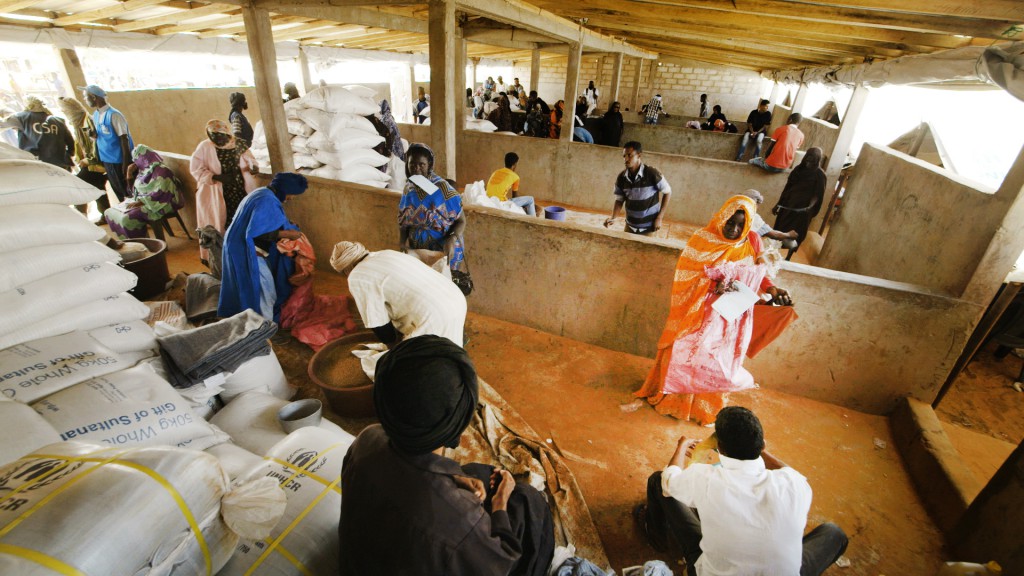
In the Mberra Camp, UNHCR administers food distributions provided by the World Food Program.
5. Scale solutions
Providing the right services to those who need them
As of October 2014, it was clear that the UPS ReliefLink Program was superior to the outdated paper based system that some UNHCR operations had been using previously. Pending one final test, it intends to scale the solution up to the rest of the operation in Mauritania.
Testing the solution in the actual context in which it was needed unearthed a number of constraints as well as several opportunities for adaptation and fine-tuning. The team in Mauritania will now be taking ReliefLink through these final steps to make sure it is uniquely configured to provide the right services to refugees and those trying to assist and protect them.
In Dollo Ado, further testing is required but will require less feedback for software development or bug fixing and is ready to consider preparations for a wider rollout of the technology.
With future consultation that takes these testing experiences and the data they provided into account, the UPS ReliefLink Program may eventually be re-introduced to the Middle East and of course other operations as well.
